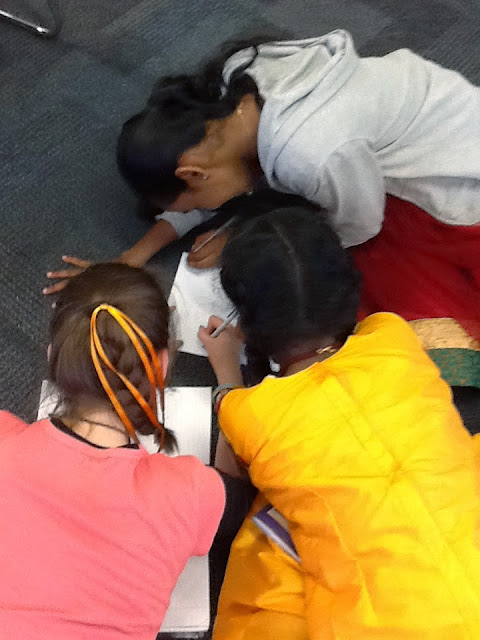Helping Young Writers Understand The Significance of Details
When I ask young writers what they understand by the term 'add details' they frequently respond with, 'We have to add more describing words.'
Some actually tell me that it means they need to add some adjectives. Such misconceptions sell the role of 'detail' so short. As a consequence, this becomes the only strategy these developing writers have to address the important issue of detail. The result is often a piece of writing drowning in flowery, somewhat clunky adjectives. A kind of adjective pile up. Adjectives are like fat. We need to learn to consume them sparingly!
I recall how my teachers frequently glided by as we were engaged in writing and following a cursory glance at our assembled words uttered the phrase - ‘You need to add more detail.’ These words were delivered while waving a floppy finger above the page. They would then move onto the next writer before there was any chance to ask a follow up question. We were left to ponder the deeper meaning of ‘detail’ and what exactly this meant for our writing. They didn’t hang around long enough to go into more detail concerning those-details…
For me this has always been a sticking point. Telling a young writer to add more detail without explaining what this actually means for the writing is about as useful as a tissue paper vase.
So, the question arises, -What do we mean by detail?
Well, we need to unpack the idea of detail so the inexperienced writer can see exactly what is meant.
When conferring with student writers about their writing they frequently inform me they want to make their writing more descriptive; more detailed. Fortunately, there are many ways we can go about making a writing piece more engaging, more reader friendly. We can start addressing detail and description in a number of places.
Description: characters, settings, objects.
Action: Making the characters move, do things, respond. Use the Show, Don’t Tell strategy and strong verbs to depict actions.Dialogue: Have the characters reveal themselves through their words. It helps to place the reader in the scene when characters say things real characters would say.
Emotions & Feeling: This type of detail allows the reader to know what is going on in the mind of the character. The writer includes information about the emotional world of the character. This concerns the internal world of the character, rather than the physical world. It is here we can teach the writer to use the craft strategy of Inside/Outside.
Unpacking heavy sentences: This is another way to provide greater detail.
'We walked to the park and played games.' becomes 'We walked to the park, where we played a game of catch with the frisbee.
These different types of detail allow the reader to visualize and this brings the words to life. As writers, it is important to weave a range of details through our writing for the reader’s benefit. The artist and the writer both paint scenes.
Questions For Writers:
Could you add some dialogue between the characters?
Could you show your readers what the character was thinking or feeling at that moment?
Could you describe the setting where the story takes place?
Could you describe the character –personality, appearance?
Could you share a secret about the character?
Can you find a place in your writing where you think you now want to say more?
What exactly did the character do? What action did they take?
The devil may not be in the detail, but we will continue to have a devil of a time trying to elevate the quality of writing while we skim over the issue of detail.







Comments
Post a Comment